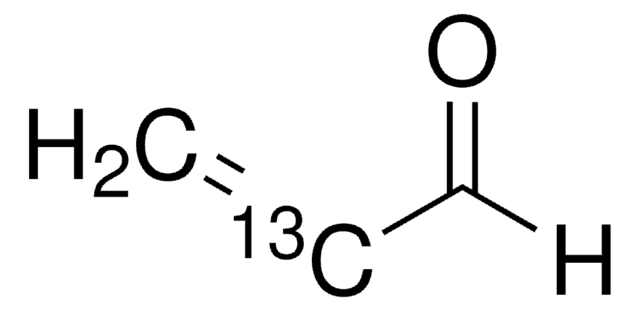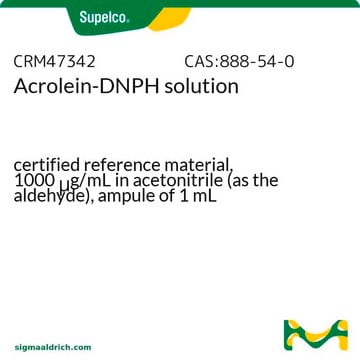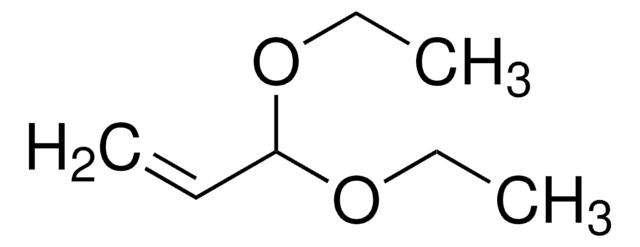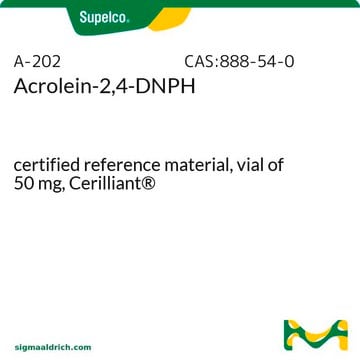110221
Acrolein
contains hydroquinone as stabilizer, 90%
Synonyme(s) :
2-Propenal
About This Item
Produits recommandés
Densité de vapeur
1.94 (vs air)
Niveau de qualité
Pression de vapeur
4.05 psi ( 20 °C)
Essai
90%
Forme
liquid
Température d'inflammation spontanée
428 °F
Contient
hydroquinone as stabilizer
Limite d'explosivité
31 %
Impuretés
<10% water and cyclic dimer
Indice de réfraction
n20/D 1.403 (lit.)
pb
53 °C (lit.)
Pf
−87 °C (lit.)
Solubilité
H2O: soluble 2
alcohol: soluble
benzene: miscible
diethyl ether: miscible
Densité
0.839 g/mL at 25 °C (lit.)
Température de stockage
2-8°C
Chaîne SMILES
[H]C(=O)C=C
InChI
1S/C3H4O/c1-2-3-4/h2-3H,1H2
Clé InChI
HGINCPLSRVDWNT-UHFFFAOYSA-N
Vous recherchez des produits similaires ? Visite Guide de comparaison des produits
Description générale
Application
Mention d'avertissement
Danger
Mentions de danger
Classification des risques
Acute Tox. 1 Inhalation - Acute Tox. 2 Oral - Acute Tox. 3 Dermal - Aquatic Acute 1 - Aquatic Chronic 1 - Eye Dam. 1 - Flam. Liq. 2 - Skin Corr. 1B
Code de la classe de stockage
3 - Flammable liquids
Classe de danger pour l'eau (WGK)
WGK 3
Point d'éclair (°F)
-20.2 °F - closed cup
Point d'éclair (°C)
-29 °C - closed cup
Équipement de protection individuelle
Faceshields, Gloves, Goggles
Faites votre choix parmi les versions les plus récentes :
Déjà en possession de ce produit ?
Retrouvez la documentation relative aux produits que vous avez récemment achetés dans la Bibliothèque de documents.
Active Filters
Notre équipe de scientifiques dispose d'une expérience dans tous les secteurs de la recherche, notamment en sciences de la vie, science des matériaux, synthèse chimique, chromatographie, analyse et dans de nombreux autres domaines..
Contacter notre Service technique












